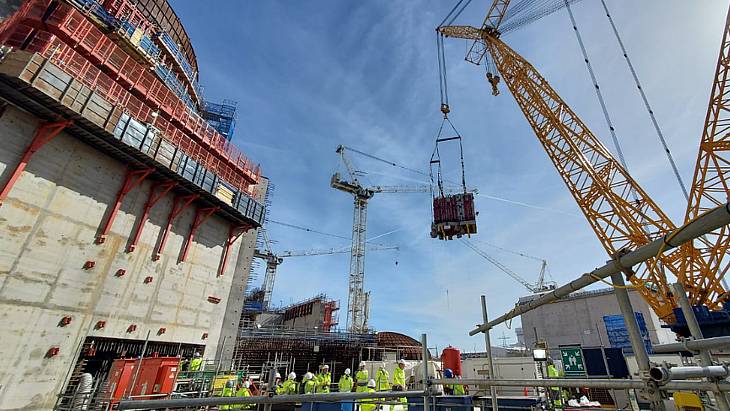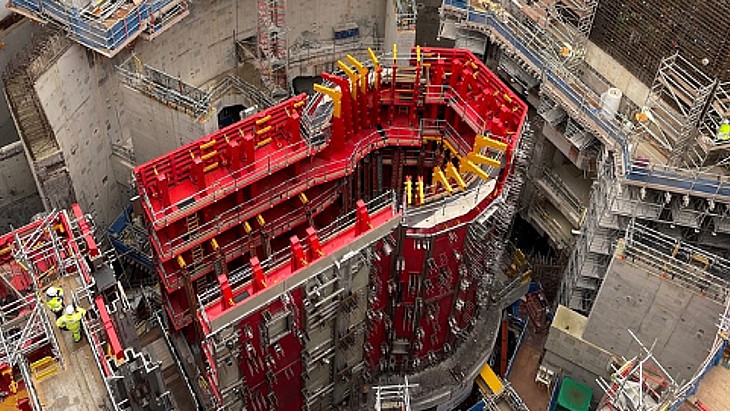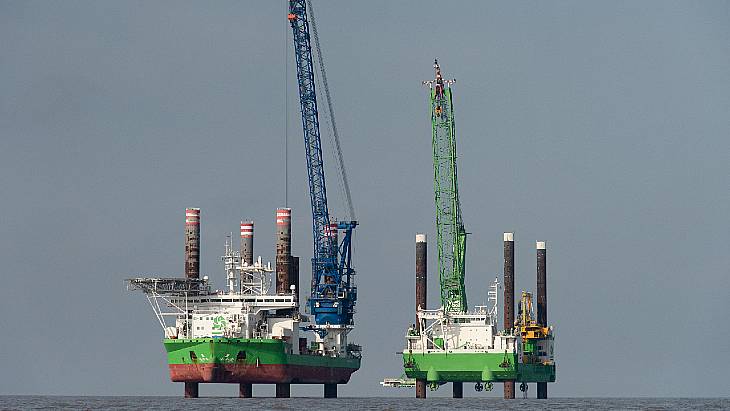The 730-tonne reactor cavity precast pool has been installed in Hinkley Point C unit 1's reactor building, using the giant crane, called Big Carl. Meanwhile the final phase of the offshore work by the site is under way after the arrival of two large jack-up vessels.

The installation was described as a 'milestone' (Image: Tractebel)
Tractebel, part of the ICOS consortium with Egis and Setec which carries out detailed civil engineering design of the nuclear island buildings at EDF's Hinkley Point C project in southwest England, said the installation "paves the way for the installation of the reactor building dome planned for this year".
It said that it was a "vital part of the inner structures of the reactor building" with the installation a complex operation given not just its size and weight, but also how it links in with other equipment in the reactor building and the precision needed.

(Image: Tractebel)
The Hinkley Supply Chain website says: "The reactor cavity and core internal storage pool will provide a tank of water to completely cover the reactor during refuelling and maintenance. The Bylor Precast team began constructing the precast base unit for the pool in 2021, while Darchem built the stainless steel liners. The team then finished the pool off by installing the internal formwork and reinforcement fixings, before making the final concrete pours."
Tractebel's Andrea Carletto, head of Nuclear UK, said: "This lifting demonstrates once again our ability to carry out the civil work design for complex low-carbon energy projects. These stages are crucial and show our ability to successfully deliver on time and with high-quality new build projects."
Offshore work moves to final phase

(Image: EDF)
The two large jack-up vessels, named Neptune and Sea Challenger are now in place off the coast by Hinkley Point C ready to install components for the cooling water system. The platforms' cranes have a combined lifting capacity of 1500 tonnes. Neptune is 60 metres long, and Sea Challenger is 132 metres long.
They will install six vertical shafts at a depth of more than 20 metres as part of measures to connect the six miles of tunnels with the seabed - EDF said that once the shafts are installed "miners will dig a horizontal connection between the bottom of the shaft and the tunnel. This is the first part of linking the intake and outfall heads with the tunnels. These 5000-tonne structures were lowered onto the seabed last summer and will circulate water to the two nuclear reactors".
Jonathan Smith, Area Delivery Director, said: "This is one of the final stages of our offshore operations, which will see teams from EDF, Balfour Beatty and New Wave Solutions working together to deliver yet another incredible feat of engineering."
Roger Frost, Balfour Beatty Project Director, said: "We now look forward to utilising our unique capability and unrivalled expertise to continue with the linking up of the six miles of tunnels which are buried below the Bristol Channel - this is another important chapter in the offshore works required for Hinkley Point C’s critical water-cooling system."